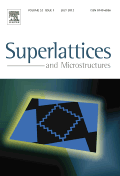
SUPERLATTICES AND MICROSTRUCTURES
Scope & Guideline
Transforming ideas into impactful research outcomes.
Introduction
Aims and Scopes
- Nanomaterials and Nanostructures:
Research on the synthesis, characterization, and application of nanomaterials, particularly two-dimensional materials like graphene and transition metal dichalcogenides, is a core focus. This includes studies on their electronic and optical properties, which are crucial for applications in sensors, transistors, and photodetectors. - Semiconductor Devices and Applications:
The journal covers advancements in semiconductor devices, including field-effect transistors (FETs), Schottky diodes, and heterojunctions. Research often involves modeling and optimizing device performance through innovative materials and structures. - Computational Materials Science:
A significant portion of the research utilizes computational methods, such as density functional theory (DFT) and other simulation techniques, to predict and analyze the properties of materials at the atomic level, facilitating the design of new materials and devices. - Optoelectronics and Photovoltaics:
The journal emphasizes the development of optoelectronic devices, including LEDs, solar cells, and photodetectors, focusing on enhancing their efficiency through novel materials and structural engineering. - Thin Film Technologies and Applications:
Studies related to the fabrication, characterization, and application of thin films, including their electrical, optical, and gas-sensitive properties, are central to the journal's scope, with a focus on applications in energy and environmental technologies.
Trending and Emerging
- Two-Dimensional Materials:
Research on two-dimensional materials, such as graphene and transition metal dichalcogenides, is rapidly increasing due to their unique electronic and optical properties that make them suitable for a wide range of applications, from flexible electronics to advanced sensors. - Hybrid and Composite Structures:
There is a significant trend towards studying hybrid structures that combine different materials to exploit their complementary properties, particularly in the context of improving device performance in optoelectronics and energy applications. - Machine Learning and AI in Materials Science:
The integration of machine learning and artificial intelligence techniques for predicting material properties and optimizing device performance is emerging as a vital area of research, reflecting the industry's move towards data-driven approaches. - Advanced Photonic Devices:
The journal is witnessing an uptick in publications focused on photonic devices, including metamaterials and plasmonic structures, which are crucial for applications in telecommunications and sensing technologies. - Sustainable and Green Technologies:
Research addressing sustainable materials and green technologies, particularly in the context of solar energy and environmental applications, is becoming increasingly prominent, reflecting global concerns over sustainability.
Declining or Waning
- Traditional Bulk Semiconductors:
Research focused on traditional bulk semiconductor materials appears to be waning as the field shifts towards more novel materials, such as two-dimensional materials and hybrid structures that offer superior properties. - Conventional Photovoltaic Technologies:
There is a noticeable decline in publications related to conventional silicon-based photovoltaic technologies, as the focus has increasingly moved towards advanced materials, such as perovskites and quantum dots, which promise higher efficiencies. - Single Material Studies:
The journal has seen fewer papers dedicated solely to the properties of single materials without the context of heterostructures or composite systems, indicating a trend towards more complex material systems that combine multiple components for enhanced performance.
Similar Journals
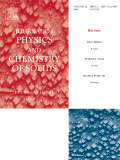
JOURNAL OF PHYSICS AND CHEMISTRY OF SOLIDS
Unveiling the Mysteries of Solid-State MaterialsJOURNAL OF PHYSICS AND CHEMISTRY OF SOLIDS, published by Pergamon-Elsevier Science Ltd, is a distinguished international journal that has been at the forefront of disseminating cutting-edge research in the fields of physics, chemistry, and materials science since its inception in 1956. This journal, which is recognized for its high impact in the Q2 category across multiple subjects—including Chemistry (miscellaneous), Condensed Matter Physics, and Materials Science—serves as a vital platform for researchers, professionals, and students to engage with significant advances in solid-state physics and chemistry. With Scopus rankings placing it in the top 15% of its field across various domains, the journal plays a crucial role in shaping the scientific dialogue surrounding materials properties, synthesis, and applications. Although it does not currently offer open access options, the presented research is widely recognized for its quality and relevance, ensuring that published works contribute meaningfully to ongoing scholarly discussions.

Advanced Electronic Materials
Unlocking Potential in Electronic and Optical TechnologiesAdvanced Electronic Materials is an esteemed journal published by Wiley, dedicated to the forefront of materials science, particularly in the areas of electronic, optical, and magnetic materials. With a commendable impact factor that places it in the Q1 quartile of its category and a Scopus rank of 36 out of 284, the journal is a vital resource for researchers, professionals, and students aiming to contribute to this rapidly evolving field. Launched in 2015 and fully transitioned to Open Access in 2023, the journal promotes widespread dissemination of knowledge, ensuring accessibility to groundbreaking research findings. With its address located in Germany at 111 River St, Hoboken 07030-5774, NJ, it serves a global academic community eager to explore innovative materials technologies that influence diverse applications ranging from consumer electronics to advanced manufacturing. As researchers seek to push the boundaries of what is possible with materials, Advanced Electronic Materials stands as a premier platform for sharing, discovering, and advancing knowledge in this essential domain.
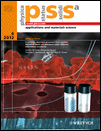
PHYSICA STATUS SOLIDI A-APPLICATIONS AND MATERIALS SCIENCE
Exploring innovations in condensed matter physics.PHYSICA STATUS SOLIDI A-APPLICATIONS AND MATERIALS SCIENCE, published by WILEY-V C H VERLAG GMBH, stands as a prominent journal in the fields of condensed matter physics, materials science, and engineering. With an ISSN of 1862-6300 and E-ISSN 1862-6319, this journal has been actively contributing to scientific discourse since its inception. The journal currently holds a respectable Q2 ranking across several categories including Electrical and Electronic Engineering and Materials Chemistry, demonstrating its significance in advancing research and development within these domains. Although it does not offer open access, the journal ensures high-quality peer-reviewed content that is critical for researchers and professionals aiming to stay at the forefront of materials science innovations. The journal’s convergence years, extending from 2005 to 2024, reflects its ongoing commitment to publishing impactful research. By facilitating discussions on applications and advances in materials science, PHYSICA STATUS SOLIDI A continues to be an essential resource for those striving to contribute to this dynamic field.

PHYSICS OF THE SOLID STATE
Illuminating the Path of Interdisciplinary ResearchPhysics of the Solid State is a distinguished journal published by Pleiades Publishing Inc., focusing on the rapid advancements and fundamental research in the realms of condensed matter physics, electronic, optical, and magnetic materials. With an ISSN of 1063-7834 and an E-ISSN of 1090-6460, this journal serves as a crucial platform for disseminating high-quality research findings, insights, and reviews essential for both academic and industrial professionals in the field. As of 2023, its Scopus ranking places it in the 26th percentile for both Condensed Matter Physics and Electronic, Optical and Magnetic Materials, reflecting its evolving influence and contribution to the scientific community. Although currently classified in the Q4 quartile, the journal aims to foster interdisciplinary dialogue, improve research visibility, and enhance its impact on contemporary scientific challenges through rigorous peer-reviewed articles and focused special issues. Despite its traditional model of access, it continues to play a pivotal role in engaging researchers and fostering innovation in solid-state physics.
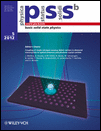
PHYSICA STATUS SOLIDI B-BASIC SOLID STATE PHYSICS
Unveiling the Secrets of Electronic and Magnetic MaterialsPHYSICA STATUS SOLIDI B-BASIC SOLID STATE PHYSICS, published by Wiley-VCH Verlag GmbH in Germany, is an esteemed journal within the condensed matter physics sphere, covering pivotal advancements in basic solid state physics. With a rich history dating back to 1961, it serves as a scholarly platform for researchers, professionals, and students alike, providing insights into the fundamental properties and applications of electronic, optical, and magnetic materials. The journal currently holds a respectable Q3 ranking in both Condensed Matter Physics and Electronic, Optical, and Magnetic Materials as of 2023, indicating its impactful contributions to these fields despite its competitive landscape. While it does not offer open access, its comprehensive research findings are critical for those engaged in innovative material science research. With a convergence period extending to 2024, PHYSICA STATUS SOLIDI B continues to play a significant role in facilitating knowledge exchange and fostering advancements in solid state physics.
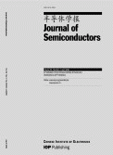
Journal of Semiconductors
Exploring the frontiers of electronic and optical materials.Journal of Semiconductors, published by IOP Publishing Ltd in the United Kingdom, is a leading scholarly journal that has established itself as a premier platform for disseminating high-quality research in the fields of condensed matter physics, electrical and electronic engineering, and materials chemistry. Since its inception in 2009, the journal has featured research articles that delve into the fundamental and applied aspects of semiconductor technologies, making significant contributions to advancements in electronic, optical, and magnetic materials. The journal boasts an impressive Q1 ranking in several categories, including Condensed Matter Physics and Electronic, Optical and Magnetic Materials, reflecting its influential role in shaping contemporary research. With a dedicated audience of researchers, professionals, and students, it aims to foster collaboration and innovation in this dynamic field. Although it operates under a traditional access model, the journal offers various publication options that ensure the visibility and impact of its articles. Through its rigorous peer-review process and commitment to excellence, the Journal of Semiconductors continues to be an invaluable resource for those seeking to stay at the forefront of semiconductor research and technology.
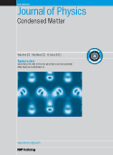
JOURNAL OF PHYSICS-CONDENSED MATTER
Transforming Ideas into Impactful Solutions in Physics.JOURNAL OF PHYSICS-CONDENSED MATTER, published by IOP Publishing Ltd, stands as a premier platform for the dissemination of impactful research in the fields of condensed matter physics and materials science. Since its inception in 1989, this journal has successfully bridged the gap between fundamental and applied research, delivering cutting-edge findings pertinent to both the academic community and industry professionals. Ranking in the Q2 category for both Condensed Matter Physics and Materials Science, it holds a respectable position within the scientific community, as evidenced by its Scopus rankings. With a commitment to fostering innovative research and promoting open dialogue, the journal offers a substantial collection of articles that contribute to the evolving landscape of materials science and physics. Researchers and students are encouraged to engage with the journal’s rich content, which not only enhances their academic pursuits but also plays a crucial role in advancing technologies based on solid-state materials.

JOURNAL OF ELECTRONIC MATERIALS
Unveiling the Future of Materials ScienceWelcome to the Journal of Electronic Materials, a premier publication in the field of materials science. Published by Springer, this esteemed journal has been a beacon for groundbreaking research in electronic, optical, and magnetic materials since its inception in 1972. As an established resource, it boasts a commendable impact factor and categorically ranks in the second quartile (Q2) in key areas such as Condensed Matter Physics and Electrical and Electronic Engineering, as well as holding a respectable third quartile ranking in fields related to Electronic, Optical, and Magnetic Materials and Materials Chemistry. Researchers, professionals, and students can access a wealth of knowledge as we publish original articles, reviews, and cutting-edge research that push the boundaries of science and technology in these critical fields. Stay informed and engaged as we explore advancements that shape the future of electronic materials.
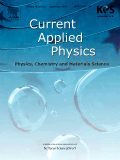
CURRENT APPLIED PHYSICS
Elevating Knowledge in Physics and Material Applications.Current Applied Physics is a leading journal published by Elsevier, specializing in the dynamic fields of Physics and Materials Science. With an ISSN of 1567-1739 and an E-ISSN of 1878-1675, this journal focuses on the latest advancements and applications of physics principles in various practical domains. Operating from the innovative hub of Amsterdam, Netherlands, Current Applied Physics occupies a significant niche in the scientific community, evidenced by its Q2 ranking in both the Physics and Astronomy and Materials Science categories for the year 2023, along with impressive Scopus rankings that highlight its relevance in the fields of General Physics and General Materials Science. The journal's scope encompasses a wide range of topics, fostering interdisciplinary collaboration and facilitating the exchange of knowledge among researchers, professionals, and students. Each issue features peer-reviewed articles that contribute to the understanding and application of physical sciences, making it an essential resource for those aiming to stay at the forefront of research and innovation in applied physics.
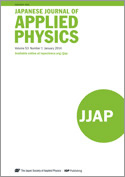
JAPANESE JOURNAL OF APPLIED PHYSICS
Empowering Discoveries in Applied SciencesThe Japanese Journal of Applied Physics is a premier publication in the field of applied physics, offering a platform for researchers and professionals to present their findings and innovations. Published by IOP Publishing Ltd, this esteemed journal has been active since 1963 and continues to contribute significantly to the understanding and advancement of applied physics across diverse applications. The journal is recognized for its rigorous peer-review process and high-quality publications, evidenced by its 2023 ranking of Q2 in Engineering (Miscellaneous) and Q3 in Physics and Astronomy (Miscellaneous). With an accessible ISSN of 0021-4922 and E-ISSN 1347-4065, the journal cultivates a global readership, fostering collaboration and innovation within the scientific community. Although the journal does not currently offer open access options, its valuable insights into the latest technological advancements and theoretical developments remain crucial for students, researchers, and industry professionals alike. By bridging the gap between fundamental physics and practical applications, the Japanese Journal of Applied Physics plays a vital role in shaping the future of applied sciences in Japan and beyond.